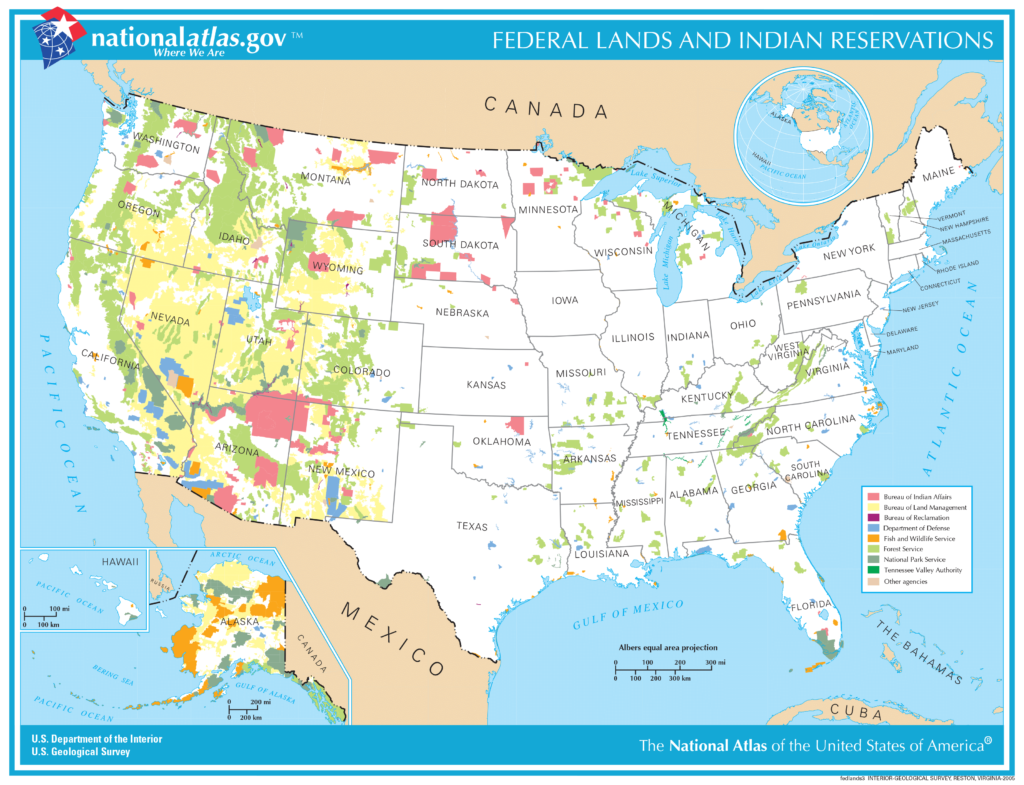The United States federal government owns about 650 million acres of land…about thirty percent of the entire land area of the country. Most federal lands are concentrated in the western half of the U.S.:

The U.S. Constitution authorizes the federal government to “dispose of and make all needful Rules and Regulations” respecting property that belongs to the United States. However it provides only a few limited ways for lands to be obtained for federal purposes.
First, the federal government can annex or obtain by treaty lands that previously lay outside our borders. This is presumed under the principles of sovereignty, and included under the treaty powers (Article II, Section 2, Clause 2 and Article VI, Clause 2).
Second, the federal government may establish and govern the federal district, but the land on which it sits must be voluntarily ceded to the federal government by the state(s) (Article I, Section 8, Clause 17).
Third, the federal government may govern military bases (“Forts, Magazines, Arsenals, dock-Yards, and other needful Buildings”)…but these lands must be purchased by the federal government with the consent of the state(s) (Article I, Section 8, Clause 17).
That’s it. There is no constitutional authority to establish parks and forests, Indian reservations (except by treaty established before a territory became a state), or other nonmilitary federal lands. These may be good things, but they are things that must be done by the states under the principle of federalism. The federal government can only do the things that it has been authorized to do by the affirmative consent of the people (in the form of the constitution).
During my presidency, I will instruct the various federal agencies (excluding the Department of Defense) to begin the process of divesting all land held unconstitutionally by the federal government back to the various states. This process would be closely linked with the four-year federalist rebalance plan, and would be done in a way that would assure the ongoing stewardship of our national parks and forests (now as state parks and forests) and other natural resources.
The states are responsible for governing domestic affairs. It’s time for the federal government to get out of their way.
